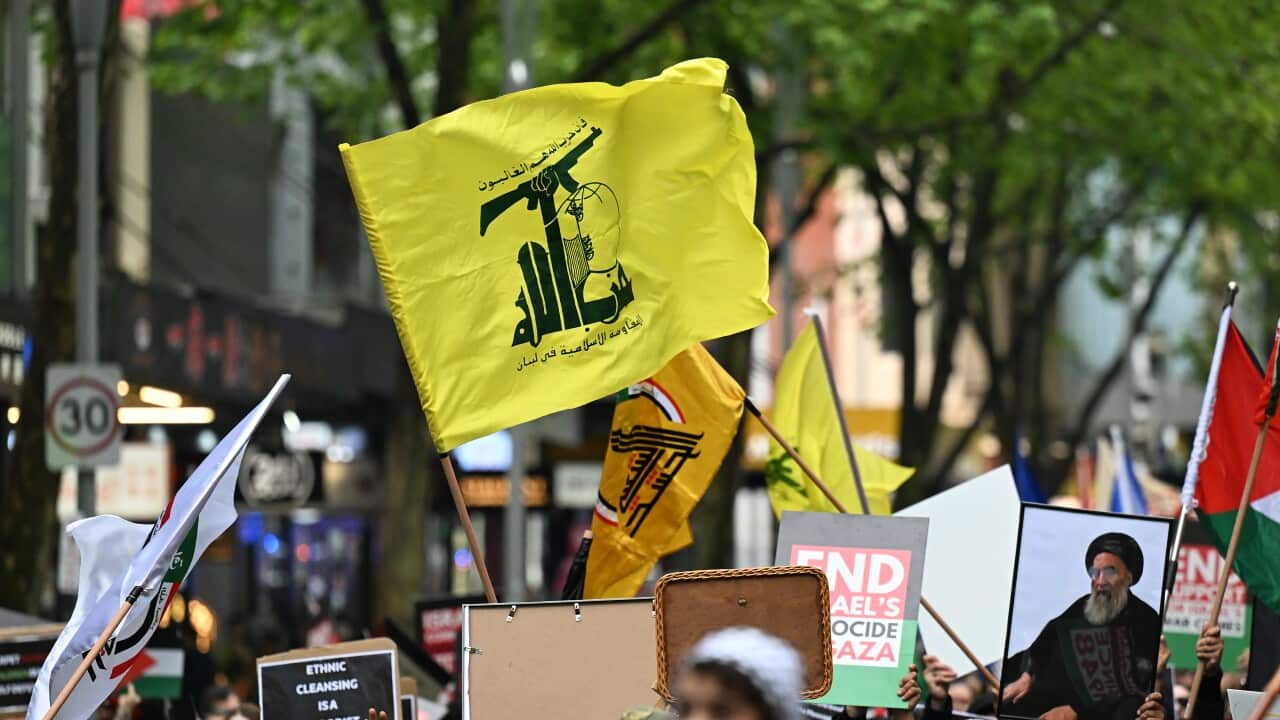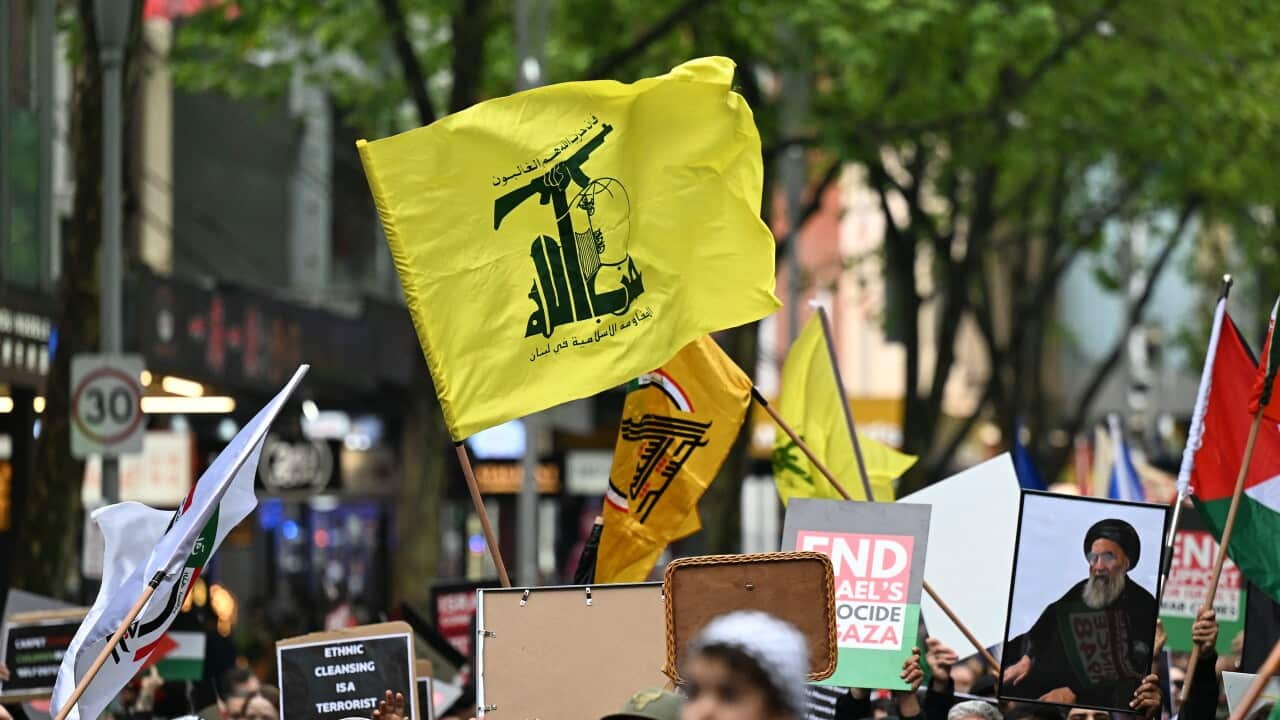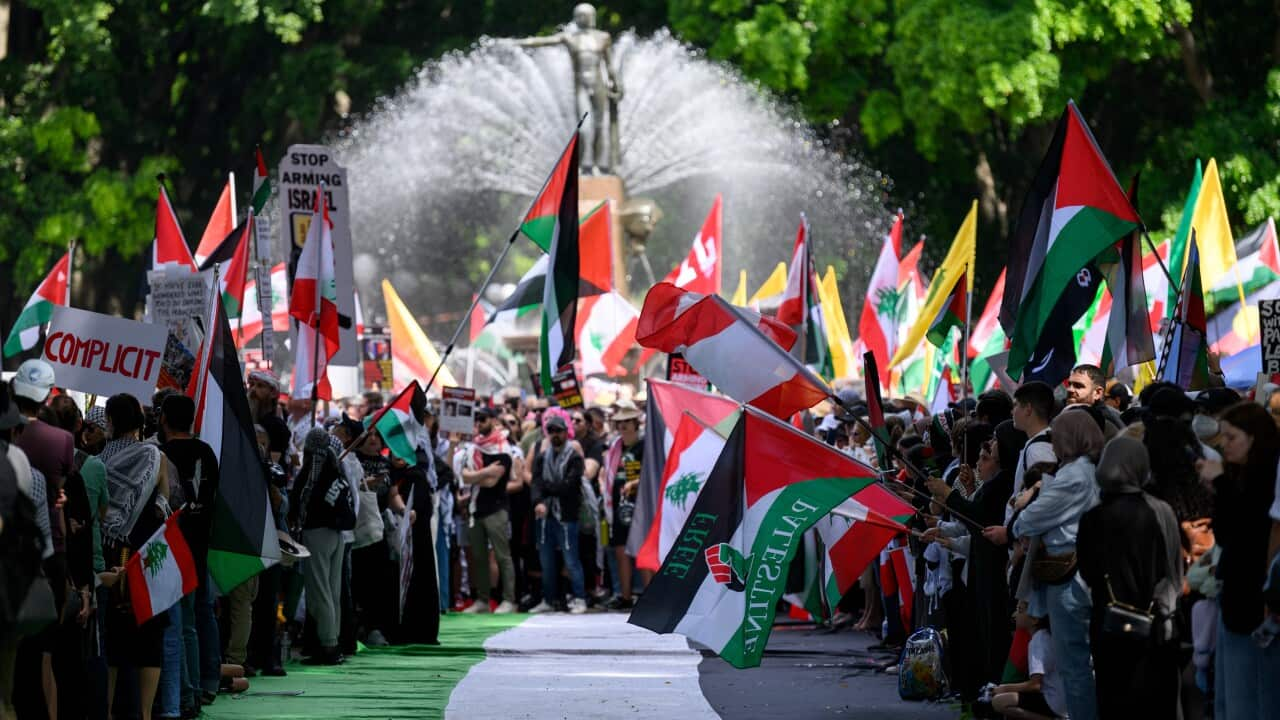The Australian Federal Police (AFP) has confirmed 14 people are being investigated for allegedly .
Speaking to Senate estimates, AFP deputy commissioner Ian McCartney spoke about the ongoing investigations into 14 people who are under investigation for displaying Hezbollah flags during a 'National Day of Action for Gaza' rally in Melbourne in September.
The AFP's Counter Terrorism and Special Investigations Command in Victoria established Operation ARDVARNA in October to investigate the display of the prohibited symbols.
McCartney said investigators have spent around 1,100 hours investigating the matter, including reviewing 90 hours of CCTV evidence and police body camera footage.
The AFP seized mobile phones as well as an item of clothing depicting a prohibited terrorist organisation symbol.
Omar Hassan, organiser of the Melbourne rally, said only a very small group involved in the rally were flying the Hezbollah flag.
"Honestly, as a Lebanese person, it feels like there is more passion and interest from media and politicians for some bits of cloth than the dead bodies of Arab men, women and children," he said.
McCartney said the AFP is also "investigating whether some discourse relating to deceased terrorists, or events in the Middle East, has reached the threshold of urging violence against groups or advocating terrorism".
What are the laws banning terrorist and hate symbols?
In January, federal legislation outlawing the Nazi salute or Nazi hate symbols came into effect.
The new laws also encompassed glorifying or praising acts of terrorism by displaying symbols used by any organisations listed as terrorist organisations by the Australian government — including Hezbollah, which was listed in 2021.
Dr Josh Roose, an associate professor of politics at Deakin University, told SBS News there is a "continuum" between hate and terror symbols that made it logical to bundle both into the same legislation.
"An argument could be made that hate and terror are pretty much on the same spectrum of abhorrent behaviour, anti-social behaviour, and also threatening behaviour," Roose said.
The penalty for displaying a prohibited symbol can include up to 12 months in prison.
There have long been federal laws protecting people from racial vilification, which includes offending, insulting, humiliating or intimidating people based on their race, colour, national or ethnic origin.
However, Dr Nicole Shackleton, a socio-legal researcher from the Royal Melbourne Institute of Technology, told SBS News the new amendments to federal counter-terrorism laws covered gaps that were previously missing around advocating or expressing support for terrorist action.
"Advocating for terrorist action has been a crime for a long time in Australia but this was a way for the government to kind of clarify the position around symbols and flags," Shackleton said.
Before these laws, there were cases that caused uproar, including a Nazi flag displayed outside a home in north-west Victoria in 2020 that led to a call to strengthen laws.
The chief executive of Yarriambiack Shire Council, where the flag was displayed, said at the time, there was little the council could do about it other than asking the residents to take it down.
While NSW and Victoria passed legislation banning Nazi symbols and gestures in 2022 and Tasmania followed suit in 2023, other states have bills before their parliaments. The federal legislation, however, allows the AFP to enforce the laws and monitor the use of terrorist or hate symbols.
When is it an offence?
Displaying a prohibited symbol alone is not an offence.
To constitute a criminal offence, displaying a prohibited symbol has to happen in circumstances that are found to do the following: spread ideas based on racial superiority or hatred, incite others to offend, humiliate or intimidate a person or group because of their race, or advocate hatred of a person or group because of their race, religion or nationality, among others.
Prohibited symbols can also be used for religious, academic, educational, artistic, literary or scientific purposes.
ASIO director-general Mike Burgess said that while people waving Hezbollah flags may indicate they follow a violent ideology, "it might just be the actions of a misdirected individual who doesn't really know what they're doing".
Have the laws been tested?
There were 113 reports relating to the display of prohibited hate symbols between January and October 2024, which resulted in 49 further investigations by the joint counter-terrorism team.
AFP deputy commissioner Krissy Barrett said that of these reports, 28 remain active, but no-one has been charged since the hate symbols legislation came into effect.
However, multiple people have been found guilty of either displaying prohibited symbols or gestures under state legislation, including Sydney restaurateur Alan Yazbek who pleaded guilty to displaying a Nazi symbol at a pro-Palestinian rally in late October.
Are there still gaps in the legislation?
Roose said there are still gaps in the legislation around sharing hate or terrorist symbols online, as it is unclear whether this constitutes a public space.
"That raises all sorts of questions about online hate, which we don't have anywhere near strong enough legislation in this country to prohibit.
"At the end of the day, you could have Nazis sitting at home here in Australia sharing hateful material, Nazi propaganda and flags and making hateful statements and not being held to account."













